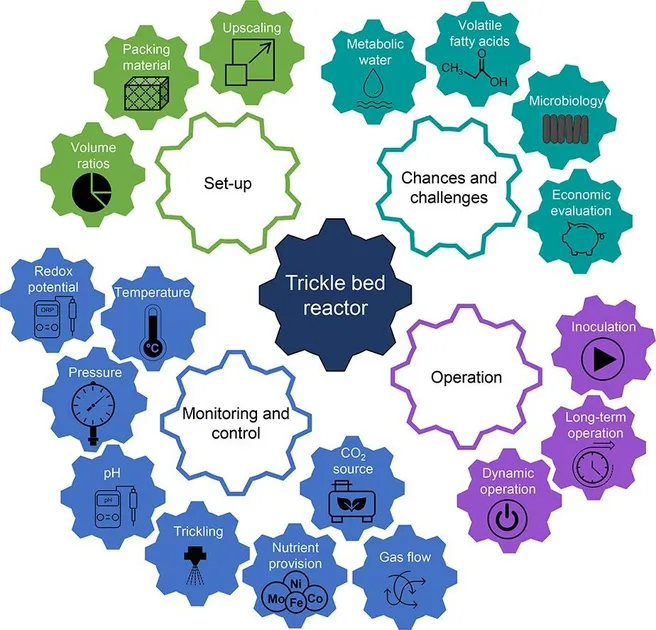Biological methanation of H2 and CO2 in trickle bed reactors is a promising energy conversion and storage approach that can support the energy transition towards a renewable-based system. Research in trickle bed reactor design and operation has significantly increased in recent years, but most studies were performed at laboratory scale and conditions. This review provides a comprehensive overview of the trickle bed reactor concept and current developments to support the decision-making process for future projects. In particular, the key design and operational parameters, such as trickling or nutrient provision, are presented, introducing the most recent advances. Furthermore, reactor operation, including the inoculation, long-term and dynamic operation, is described. To better assess the reactor upscaling, several parameters that enable reactor comparison are discussed. On the basis of this review, suitable operational strategies and further research needs were identified that will improve the overall trickle bed reactor performance.
